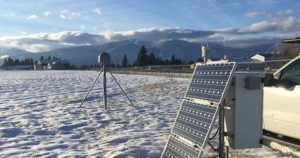Announced January 27th, 2020, Sapcorda Services GmbH announced a new, open data format for GNSS high accuracy positioning in mass market applications.
To understand just how much of a potentially big deal this is, a little background first:
We are all familiar with formats, for high precision GNSS applications, like those for applications that use RTK, RTN, PPP services. But what of the coming boom in high precision for mass markets: consumer, pro-sumer, UAS, autonomous/assisted vehicle navigation systems, and more? Many solutions, like RTK, RTN, PPP (in certain legacy forms) are not always optimal for mass markets.
These growing needs have been anticipated, and planned for, for some time. We see this in the design of the newer constellations and in modernization programs for early constellations. Indeed, the RTCM (Radio Technical Commission for Maritime Services), chartered in 1947 to address in-depth radio communications and navigation protocols, has recently convened a special committee to address standards or mass market formats and messages. You might be familiar with formats you transmit between your surveying base and rover or receiver from your local RTN—like RTCM3.1 and RTCM3.2-MSM—you can thank the RTCM SC104 committee for those standards. You might also be utilizing one or more of the real-time PPP services (transmitted by L-Band satellites). It was only a matter of time before some standard formats emerged, either via said committees, commercial entities, or the open source community—growing needs made this an imperative.
There has been a lot of R&D into optimal solutions for serving mass market devices over major transportation corridors, cities, and even broad regions. There are a number of different approaches leveraging RTK, PPP, hybrids of those, and others leveraging various other signals (dedicated and/or opportunistic). Sapcorda is not alone in such R&D but adds a bonus in that this is essentially an open data format.
From their press release:
“SPARTN (Safe Position Augmentation for Real-Time Navigation) is the first high-accuracy, open- and free-to-use GNSS format tailored for broadcast distribution in mass market applications. SPARTN is the result of multiple years of research, development, and collaboration of a number of industry leading companies.”
Familiar legacy differential methods for high precision GNSS, like RTK and NRTK (RTN) are observation-based (Observation Space Representation, or OSR). From base receiver observations, “correctors” (for lack of a better term for a kind of “lump sum” of error sources) are transmitted, for instance, as RTCM3 et al., which the rover applies to its own observations. This requires a close-by base, or dense RTN (typically 50km-70km spacing between bases), and the transmission methods for “correctors” can be quite geographically tethered.
SPARTN encompasses elements of State Space Representation (SSR): an approach that is at the core of many PPP implementations. “States” of error sources (e.g. clock, orbit, ionospheric conditions, etc.) are packaged as “products” that can be broadcast—and are effective— over broad regions. In many legacy PPP implementations, this may require convergence times and yield poor vertical results. But, as a number of successful commercial PPP services have done, using data from semi-dense networks of bases (e.g. 100km-200km spacing) greatly reduces convergence time and brings the results to near-survey grade. Some systems are already serving autonomous markets. There are many thousands of existing base networks, like RTN and scientific arrays, that can be leveraged to develop SSR data to feed, in real-time, services using formats like SPARTN.

Will SPARTN or other mass-market formats make current methods obsolete for surveying, construction, etc., like RTK and RTN? Not likely; mass-market methods are not seeking the same precision threshold. And instead, it may be the infrastructure put in place for RTN that are the “utility” that feeds observation data to mass-market service-providers.
SPARTN was developed to address specific needs of emerging mass markets. From their press release:
“The SPARTN format combines the advantages of SSR (State-Space Representation) with state-of-the- art communication technologies and covers all requirements of service providers, system integrators, and GNSS receiver manufacturers involved in advanced solutions for mass market applications. The format supports a broadcast distribution model eliminating communication bottlenecks and enabling continental level positioning services with unlimited number of subscribers. SPARTN is a highly compressed format with extensive robustness for internet and L-band satellite communication in challenging environments. The format supports the use of modern end-to-end encryption, integrity, and message authentication capabilities.”
Such a format would be leveraged by system integrators and component manufacturers—to integrate with other elements of, for instance, autonomous/assisted vehicle navigation systems. One misconception about GNSS for autonomous is that it would represent a potential single point of a nav system failure. No proposed system would rely on GNSS alone; IMUs, cameras, lidar, sonic are often elements of such systems—complementing each other and the GNSS.
You can find more about SPARTN (and downloads) at: www.SPARTNformat.org
About Sapcorda Services GmbH:
Sapcorda Services GmbH is a GNSS service provider focusing on the emerging high precision GNSS mass markets. The company has designed its technology and service offering to serve high volume automotive, industrial and consumer markets. Sapcorda has been founded as a Joint Venture in 2017 by Bosch, Geo++, Mitsubishi Electric and u-blox. Currently Sapcorda operates in Europe and in USA with offices in Berlin, Hanover and Scottsdale, AZ.

